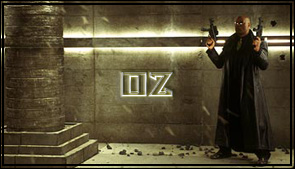HAhahahhahahah. that was so funny. |
|
Results 1 to 9 of 9
-
03-03-2009 02:35 PM #1Banned

- Join Date
- Mar 2008
- Posts
- 4,904
- Likes
- 64
The Importance of REM Atonia; Dog Runs in Sleep :D
Yea who knows, maybe it was NREM and he really was just sleep walking. But damn That's gotta hurt! Makes you appreciate the little things in life, like your nightly REM atonia sessions!!!
That's gotta hurt! Makes you appreciate the little things in life, like your nightly REM atonia sessions!!!
Last edited by Shift; 03-03-2009 at 02:41 PM.
-
03-03-2009 03:16 PM #2
-
03-03-2009 03:19 PM #3"O" will suffice. Achievements:










- Join Date
- Apr 2005
- LD Count
- 20+ Years Worth
- Gender

- Location
- Central Florida
- Posts
- 16,083
- Likes
- 4032
- DJ Entries
- 149
HAaHAhaAhAhahAhAhahHAhAhAHha!!
Poor little guy.
 Dream Journal: Dreamwalker Chronicles Latest Entry: 01/02/2016 - "Hallway to Haven" (Lucid)(Or see the very best of my journal entries @ dreamwalkerchronicles.blogspot)
Dream Journal: Dreamwalker Chronicles Latest Entry: 01/02/2016 - "Hallway to Haven" (Lucid)(Or see the very best of my journal entries @ dreamwalkerchronicles.blogspot)
-
03-03-2009 04:24 PM #4Just the Wind

- Join Date
- May 2008
- LD Count
- 40
- Gender

- Posts
- 254
- Likes
- 2
LOL!
That can be dangerous, though. I've seen happen in my family.
And I'm gonna be next.
And considering how much I fly in dreams...
Ouch.
-
03-04-2009 05:05 AM #5Member

- Join Date
- Dec 2007
- Posts
- 1,342
- Likes
- 4
Poor little guy! Good thing I've never had anything like that happen to me before.

-
03-04-2009 05:06 AM #6Banned

- Join Date
- Mar 2008
- Posts
- 4,904
- Likes
- 64
-
03-04-2009 06:42 AM #7
You were the first to make me laugh today, congrats
 if you can read this then you are about to be punched
if you can read this then you are about to be punched
-
03-04-2009 08:19 AM #8Member

- Join Date
- Jul 2008
- Posts
- 5
- Likes
- 0
Poor doggy! It was funny to watch, but I feel guilty laughing, hehe.
-
03-04-2009 10:40 AM #9Member

- Join Date
- Jan 2009
- Posts
- 22
- Likes
- 0
lmao
 .......what a funny dog. The best part was when he woke up and had dumb look on its face as if it too say what the hell just happened!
.......what a funny dog. The best part was when he woke up and had dumb look on its face as if it too say what the hell just happened!




 LinkBack URL
LinkBack URL About LinkBacks
About LinkBacks





 Reply With Quote
Reply With Quote



Bookmarks